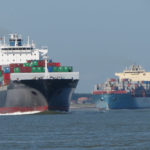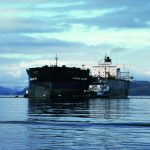Signed into law following the »Exxon Valdez« incident, OPA 90 rules should cover also non-tankers soon
Back in 2008 the US Coast Guard (USCG) issued the tanker final rule for salvage and marine fire fighting (SMFF[ds_preview]) under the Oil Pollution Act of 1990 (OPA 90). This rule primarily requires tank ships and barges, carrying oils as defined in the 33 CFR (The Code of Federal Regulations (CFR) is the codification of the general and permanent rules and regulations (sometimes called administrative law) published in the Federal Register by the executive departments and agencies of the federal government of the United States) 155 as cargo, to pre-contract qualified salvors able to respond to a marine casualty in US waters without delay.
On the sidelines, the non-tanker community, defined by the USCG as any self-propelled vessel over 400 GT, has been, since 2004, quietly awaiting their turn to follow the tankers with the SMFF requirements. The non-tanker rules, stalled in the Washington DC circles for several years, have now been accepted by the Office of Management and Budget and the final rule is expected to be out within the next months. More than 14,000 ships currently operating in and out of US waters will be required to update their Vessel Response Plans (VRP) by contracting with a qualified salvor.
As experienced during the tanker process, most owners should carry out in-depth vetting and evaluation of potential salvors to include review of contract terms, equipment inspection to determine whether it is owned or rented, presence in the US, existing clients, personnel qualifications and experience with USCG, among other criteria. »OPA 90 regulations place strict liability on the shipowner himself and as such it is critical for them to diligently evaluate to select the best contractor, and not just go by third party recommendations or fancy websites« said Mauricio Garrido of T&T Salvage.
USCG regulations concentrate on the need for a credible salvage and marine firefighting response capability throughout US waters. Whether the crisis is caused by human error, act of nature, or terrorist attack, the ability to deploy the proper equipment and personnel to a casualty is paramount not only to environmental protection and homeland security but also to mitigate potential liability exposure. Salvage under OPA 90 is merely setting forth to plan for a casualty. Realistically, the manner in which salvage is executed will not change under the new rules; however, the manner in which shipowners and underwriters must plan for salvage has changed dramatically.
With the largest inventory of prepositioned owned salvage and firefighting equipment in the market T&T Salvage continues to meet compliance in all USCG Captain of the Port Zones, including Puerto Rico, Alaska, and Guam. T&T salvage is ready to support non-tankers not only comply with the new rules but also to have a real capability in case of an actual emergency. Selected by major operators such as BP, Chevron, Conoco-Phillips, Kirby, SeaRiver, Mitsui OSK, Aramco, and Maersk along with over 60% of the total tank vessel market share.





















